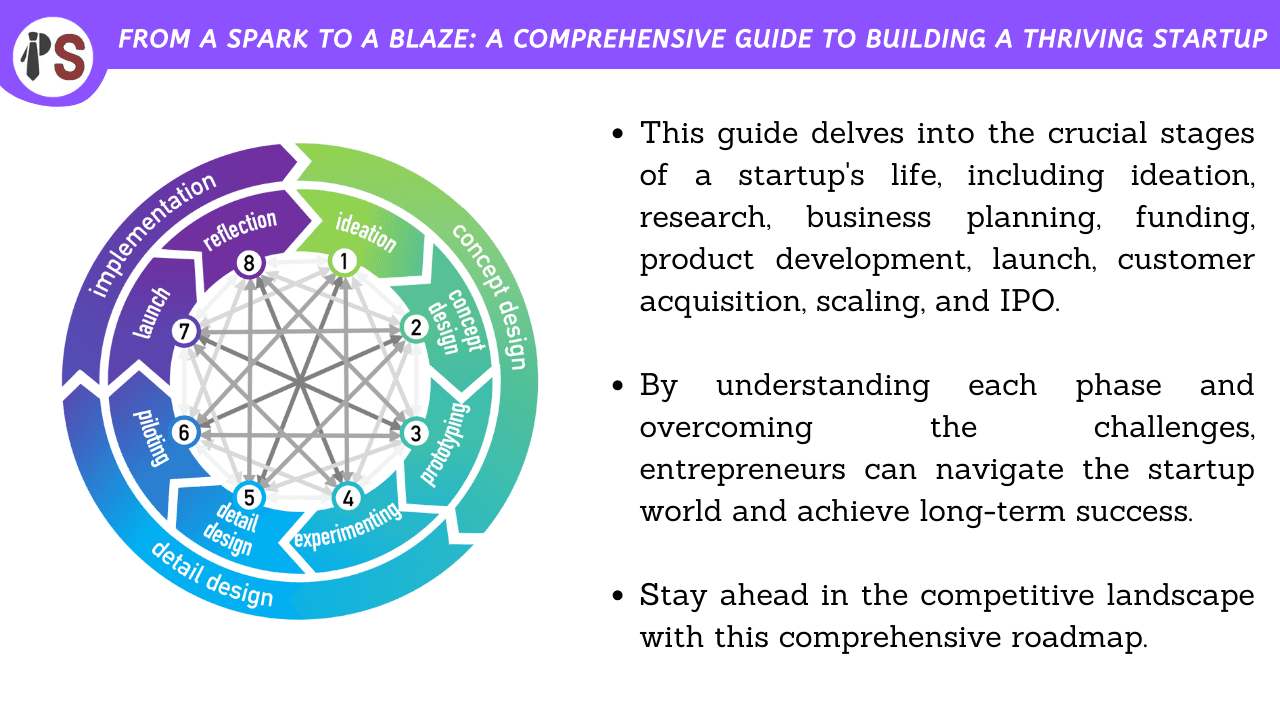
In the dynamic world of startups, the journey from a simple idea to a successful public company can be both exhilarating and challenging. This comprehensive guide outlines the key steps involved in a startup's life, from ideation to its Initial Public Offering (IPO). By understanding each stage and the associated challenges, aspiring entrepreneurs can better prepare themselves for the exciting and rewarding adventure of building a thriving business. Let's explore the essential phases that startups undergo on their path to success.
The first step in the life of a startup is the ideation phase. During this phase, founders brainstorm and come up with innovative ideas for a product or service that can solve a specific problem or fulfill a need in the market. This typically involves identifying gaps in the market and generating creative solutions to address these gaps.
Once the idea is formed, the founders need to conduct extensive research to validate the idea. This involves determining the market demand, identifying the target audience, and understanding the competitive landscape. Validation may include:
Conducting surveys and interviews with potential customers
Analyzing market trends and competitor offerings
Identifying potential barriers to entry and regulatory requirements
With the idea validated, the founders need to develop a comprehensive business plan that outlines the company's vision, mission, goals, strategies, and financial projections. Key components of a business plan include:
Executive summary
Company description
Market analysis
Organizational structure and management team
Product or service offering
Marketing and sales strategies
Financial projections and funding requirements
Startups need funding to bring their ideas to life. The founders can explore various funding options such as:
Bootstrapping: Self-funding the startup using personal savings or resources
Angel investors: High-net-worth individuals who provide funding in exchange for equity
Venture capital: Investment firms that provide funding in exchange for equity
Crowdfunding: Raising funds from the public through platforms like Kickstarter or Indiegogo
The next step is to develop a Minimum Viable Product (MVP), which is a simplified version of the product or service that can be tested with the target audience to gather feedback and make necessary improvements. The product development process typically involves:
Designing and prototyping
Developing the product or software
Testing and iterating based on user feedback
Once the MVP is developed and refined, the startup can launch its product or service in the market. This involves setting up distribution channels, establishing partnerships, and creating a go-to-market strategy to reach the target audience.
To grow the business, startups need to acquire customers through various marketing and advertising channels such as:
Social media marketing
Content marketing
Search engine optimization (SEO)
Pay-per-click advertising (PPC)
Influencer marketing
Public relations and media outreach
As the startup gains traction and grows its customer base, it needs to scale its operations to meet the demand. This involves:
Hiring new employees and building a strong team
Expanding infrastructure, such as office space and equipment
Optimizing processes and implementing systems to improve efficiency
As the startup scales, it may require additional funding rounds to fuel growth and expansion. These funding rounds, typically referred to as Series A, Series B, and so on, help startups raise capital from investors to support their ongoing growth.
If the startup decides to go public, it needs to file for an IPO and get approval from regulatory bodies like the Securities and Exchange Commission (SEC). This allows the startup to raise capital from the public and increase its visibility in the market. The IPO process includes:
Preparing financial statements and disclosures
Selecting underwriters and setting an IPO price
Conducting a roadshow to pitch the company to potential investors
After going public, the startup needs to continue growing its business and delivering value to its shareholders. This involves:
Expanding product offerings and entering new markets
Fostering innovation and staying ahead of the competition
Maintaining a strong company culture and retaining top talent
Ensuring regulatory compliance and maintaining transparency in financial reporting and corporate governance
Focusing on long-term growth strategies, such as mergers and acquisitions or strategic partnerships
?
In conclusion, the life of a startup involves a series of steps from ideation to going public. Founders must navigate through various stages, including idea validation, business planning, funding, product development, launching, customer acquisition, scaling, and potentially, an IPO. Each stage presents unique challenges, and a successful startup must be able to adapt and evolve to overcome these hurdles and continue growing.
At Professional Saathi, we offer a range of business consultancy services that help businesses improve their performance, achieve growth, and overcome challenges.
Copyright 2025 © Created By KTPG PROFESSIONAL SAATHI CORPORATE CONSULTANT PRIVATE LIMITED, All Rights Reserved.
Leave Your Comment